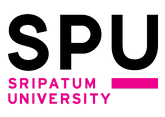Please use this identifier to cite or link to this item:
http://dspace.spu.ac.th/handle/123456789/2441Full metadata record
| DC Field | Value | Language |
|---|---|---|
| dc.contributor.author | Phuthanate Phoosekieaw and Sanya Khunkhao | en_US |
| dc.date.accessioned | 2554-07-06T10:07:36Z | - |
| dc.date.available | 2554-07-06T10:07:36Z | - |
| dc.date.issued | 2011-05-28 | - |
| dc.identifier.citation | Flip chip, Underfill, Tacky flux | en_US |
| dc.identifier.isbn | 978-981-08-8637-0 | - |
| dc.identifier.issn | 2010-460X | - |
| dc.identifier.uri | http://dspace.spu.ac.th/handle/123456789/2441 | - |
| dc.description.abstract | The rapid uptake of flip-chip technology within the electronics industry due to their better thermal performance, smaller size, lower profile, light weight, and higher input/output density, the solder joints together with underfill in flip chip package serve as a mechanical mechanism for resisting the thermal deformation induced by the coefficient of thermal expansion (CTE) mismatch between silicon die and substrate. underfill materials are employed in flip-chip assemblies to enhance solder joint reliability performance. The adhesion of underfills with solders is important to the integrity of the flip-chip structure. The effect of temperature and humidity aging as well as flux residue on adhesion strength was also investigated. | en_US |
| dc.description.sponsorship | IACSIT Press, Singapore | en_US |
| dc.language.iso | en_US | en_US |
| dc.publisher | IACSIT Press, Singapore | en_US |
| dc.relation.ispartofseries | Vol.6 | en_US |
| dc.relation.ispartofseries | ICIEE 2011 Session 9 | en_US |
| dc.subject | Flip chip, Underfill, Tacky flux | en_US |
| dc.title | Flux/underfill Compatibility Study for Flip-chip Assembly Process | en_US |
| dc.type | Other | en_US |
| Appears in Collections: | บทความวิชาการ | |
Files in This Item:
| File | Description | Size | Format | |
|---|---|---|---|---|
| rp047_ICIEE2011-E20007.pdf | 837.63 kB | Adobe PDF | View/Open |
Items in DSpace are protected by copyright, with all rights reserved, unless otherwise indicated.
